Last Updated on December 18, 2023
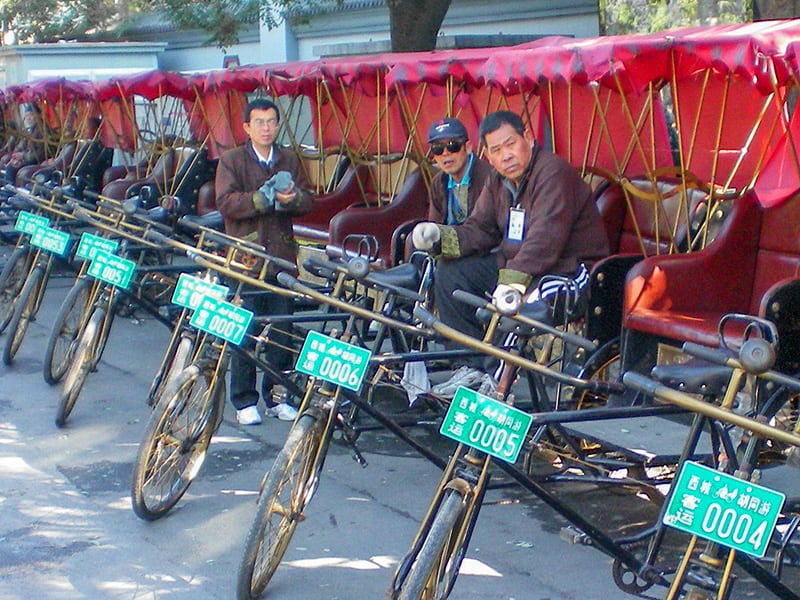
Estimated reading time: 5 minutes
By Jim Ferri
Beijing hutong tours are a great way to see Chinese daily life up close. They’re popular because ever since China it opened its doors to foreign tourism decades ago, it and its people have fascinated travelers.
Today we continue to be intrigued by the differences in our cultures and the newness and exoticism of this place that still retains its air of mystery.
In addition to being awed by sites such as the Forbidden City, many visitors to Beijing are also struck by the enormity of the modern city, which is crammed with expansive stretches of modern buildings, many constructed prior to the Beijing Olympics in 2008.
Hutongs About the City
But about the city you’ll also see the Hutongs, the old neighborhoods of narrow lanes that originated during the Yuan Dynasty in the 13th century and connect the homes and little courtyards, which were once so common to Chinese life. For many, the hutongs are where the real culture of old Beijing is found, although many of these old neighborhoods have been cleared to make room for apartment buildings.
Beijing hutong tours are popular and sometimes include a visit to a Chinese home with the opportunity to speak with the resident, via an interpreter, of course.
Yes, it’s a sanitized tour that’s orchestrated, but it’s still fascinating to look about and see the living conditions of the Chinese and walk around their homes. You find yourself constantly peeking everywhere just to see how life there compares with the rest of the world.
Pedicabs At the Ready
One morning on an excursion about Beijing, I joined a group for a tour of a hutong home. Since the old streets were all so narrow and winding, we were brought out there in pedicabs, bicycle-powered versions of the old rickshaw. With two to a pedicab, our conga line of about 15 wound its way through the narrow streets and when we got near the home we were to visit, the drivers dropped us off about a block away.
The home itself was rather drab and non-descript, sparsely decorated although well kept and neat. It had a main room with a small kitchen area and bedroom and we were free to wander about it. Outside was a small enclosed courtyard with a few trees.
Although we had our own tour guide, we were met inside by another guide who gave us a short talk and did all of the interpreting with the woman who lived there. Through him she briefly told us about her home and the hutong after which we asked questions.
Most, if not all, of us found the chat with the woman quite interesting, even though it was, obviously, “sanitized.”
Hutong Life
When asked about the lack of modern plumbing facilities, she said that 25 families used same public toilet, adding “it is very busy in the morning.” We were also told the hutongs lack central heating and their outdoor cooking pots add to the city’s pollution problem. I felt the facts were supplied to bolster the government’s apartment-building program, which I later learned was unpopular with Beijingers.
In response to another question about pensions, she told us that the age to get a pension for a factory worker is 55 for a male and 50 for a woman, 60 and 55 if you work for the government.
“People get an average of 60% of their salary as their pension,” she told us through the interpreter.
When she told us her three pet turtles were named 1,2 and 3, a British tourist in our group promptly announced he was renaming them gin, tonic and ice.
After about a half-hour we were brought back to our pedicabs and continued our hutong tour of the HouHai district riding up Tobacco Pipe Lane to Lotus Lane, which was lined with expensive bars. All of the streets were crowded, which didn’t slow down our drivers as they moved along to a cacophony of bicycle bells.
It was quick and sanitized but fun nevertheless.
If you go:
Beijing Tourism
http://english.visitbeijing.com.cn/

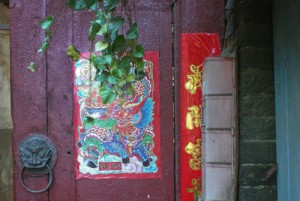
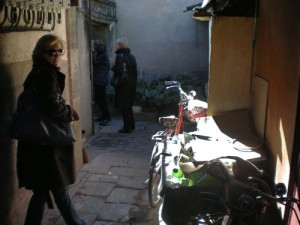
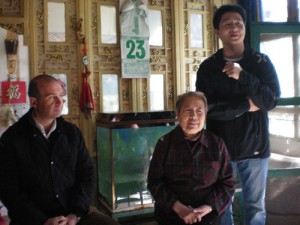
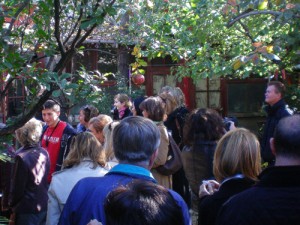
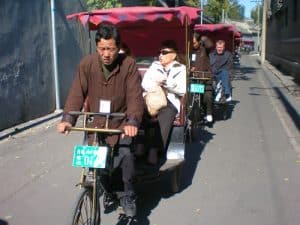
Leave a Reply